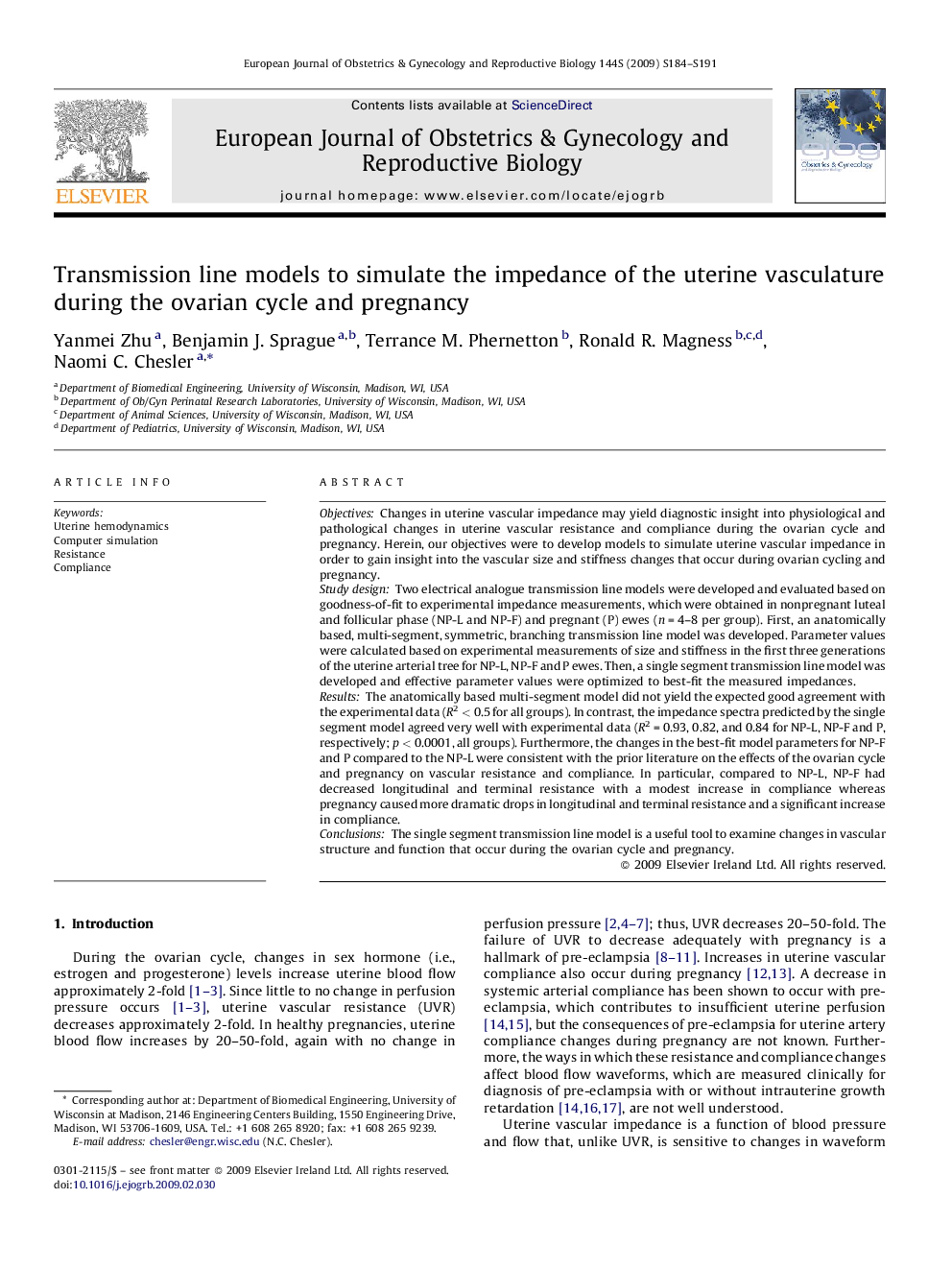| Article ID | Journal | Published Year | Pages | File Type |
|---|---|---|---|---|
| 3921029 | European Journal of Obstetrics & Gynecology and Reproductive Biology | 2009 | 8 Pages |
ObjectivesChanges in uterine vascular impedance may yield diagnostic insight into physiological and pathological changes in uterine vascular resistance and compliance during the ovarian cycle and pregnancy. Herein, our objectives were to develop models to simulate uterine vascular impedance in order to gain insight into the vascular size and stiffness changes that occur during ovarian cycling and pregnancy.Study designTwo electrical analogue transmission line models were developed and evaluated based on goodness-of-fit to experimental impedance measurements, which were obtained in nonpregnant luteal and follicular phase (NP-L and NP-F) and pregnant (P) ewes (n = 4–8 per group). First, an anatomically based, multi-segment, symmetric, branching transmission line model was developed. Parameter values were calculated based on experimental measurements of size and stiffness in the first three generations of the uterine arterial tree for NP-L, NP-F and P ewes. Then, a single segment transmission line model was developed and effective parameter values were optimized to best-fit the measured impedances.ResultsThe anatomically based multi-segment model did not yield the expected good agreement with the experimental data (R2 < 0.5 for all groups). In contrast, the impedance spectra predicted by the single segment model agreed very well with experimental data (R2 = 0.93, 0.82, and 0.84 for NP-L, NP-F and P, respectively; p < 0.0001, all groups). Furthermore, the changes in the best-fit model parameters for NP-F and P compared to the NP-L were consistent with the prior literature on the effects of the ovarian cycle and pregnancy on vascular resistance and compliance. In particular, compared to NP-L, NP-F had decreased longitudinal and terminal resistance with a modest increase in compliance whereas pregnancy caused more dramatic drops in longitudinal and terminal resistance and a significant increase in compliance.ConclusionsThe single segment transmission line model is a useful tool to examine changes in vascular structure and function that occur during the ovarian cycle and pregnancy.
